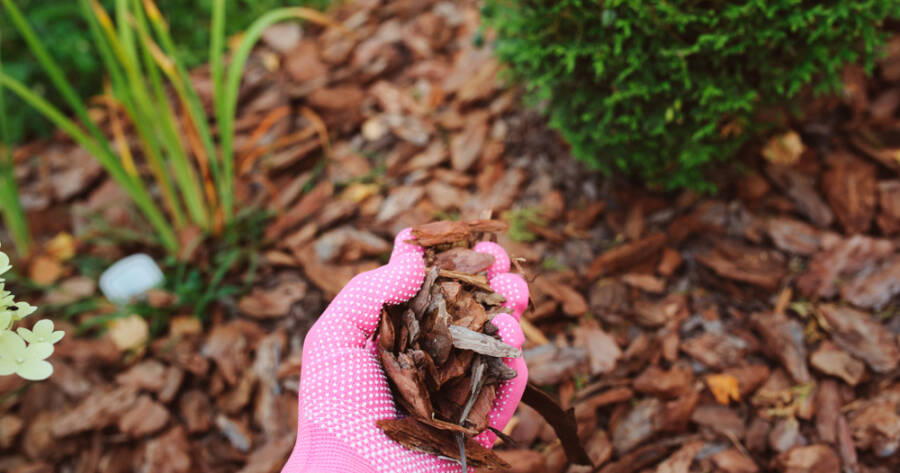Mulch is one of the simplest and most effective tools in gardening. It helps retain soil moisture, suppress weeds, regulate soil temperature, and even improve soil health over time. But using mulch incorrectly can cause more harm than good, leading to plant stress, rot, or pest problems. With a little know-how, you can apply mulch the right way and give your garden a strong foundation for growth. Understand how to make the most of this garden essential.
Choose the Right Type of Mulch
Mulch comes in two main categories: organic and inorganic. Organic mulches are made from natural materials that break down over time, enriching the soil. Inorganic mulches don’t decompose and are typically used for decorative or long-term landscaping purposes.
Common organic mulches include shredded bark, wood chips, straw, pine needles, grass clippings, and compost. These mulches are ideal for vegetable gardens, flower beds, and around trees and shrubs. As they decompose, they add nutrients to the soil and encourage healthy microbial activity.
Inorganic mulches, such as gravel, rubber, or landscape fabric, don’t improve soil quality but can be useful in areas where long-term weed suppression and minimal maintenance are desired. They’re best suited for pathways, around permanent plantings, or in arid climates where soil amendment is less of a concern.
For moisture retention and weed control in most backyard gardens, organic mulch is the better choice.
How to Apply Mulch Properly
The effectiveness of mulch depends heavily on how it’s applied. A common mistake is applying mulch too thickly or piling it against plant stems, which can lead to poor air circulation and rot.
Start by clearing the area of weeds and watering the soil deeply. Then apply a layer of mulch that’s 2 to 4 inches thick—thick enough to block sunlight from reaching weed seeds but not so thick that it traps excess moisture or creates a barrier to air exchange.
Be careful to leave a few inches of space around the base of trees, shrubs, and plant stems. This prevents stem rot and discourages pests like rodents from nesting close to plants. For trees, keep mulch 3 to 6 inches away from the trunk in a donut shape rather than mounding it like a volcano.
Replenish mulch as needed throughout the growing season, especially in areas with heavy rain or strong sun, which can break it down more quickly.
Locking in Moisture Effectively
One of mulch’s biggest benefits is its ability to reduce water evaporation from the soil surface. By acting as a protective barrier, mulch helps maintain consistent soil moisture—especially important during dry spells or hot summer months.
To get the best results, apply mulch after watering, not before. This ensures the soil is already moist and the mulch locks in that moisture rather than sitting over dry ground. Mulch also helps prevent the formation of a hard crust on the soil surface, which can reduce water absorption.
If you’re using mulch in vegetable beds or containers, straw and shredded leaves are excellent options. They’re light, allow water to pass through easily, and break down quickly, enriching the soil.
For larger garden areas, shredded bark or wood chips offer long-lasting coverage and are especially effective at moisture retention under trees and shrubs.
Weed Prevention Without Chemicals
Mulch also works as a natural weed barrier by blocking sunlight from reaching weed seeds. A consistent mulch layer helps prevent new weeds from sprouting and makes it easier to remove any that do manage to poke through.
To boost your weed control, consider laying down a layer of newspaper or cardboard under your mulch. These biodegradable materials add an extra layer of protection while still allowing water and air to reach the roots. Just make sure to overlap the paper and remove any glossy pages or plastic coatings.
Keep in mind that while mulch reduces weed growth, it doesn’t eliminate it entirely. Regularly inspect mulched areas and pull any small weeds early before they become a bigger problem.
Mulch for a Healthier, Easier Garden
When used correctly, mulch is a low-effort, high-reward way to improve your garden’s health and appearance. From locking in precious moisture to keeping weeds at bay, a proper mulch layer helps your plants thrive with less work and water.
Whether you’re growing vegetables, flowers, or landscaping trees, a few inches of the right mulch can go a long way in creating a more resilient, beautiful outdoor space. So grab a rake and start mulching—it’s one of the smartest moves you can make for your garden.

